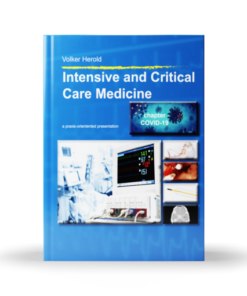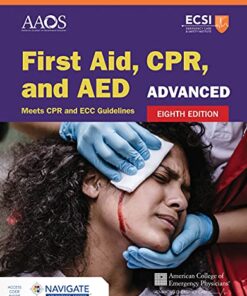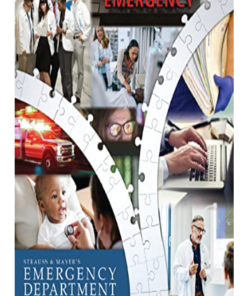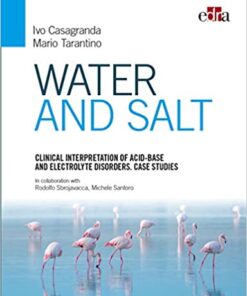- Lindsay Murray, MB, BS, FACEM, Emergency Physician and Clinical Toxicologist, Sir Charles Gairdner Hospital, Nedlands, Australia;
- Frank Daly, MBBS, FACEM, Director of Emergency Department and Consultant Clinical Toxicologist, Royal Perth Hospital; Clinical Senior Lecturer in Emergency Medicine, University of Western Australia; Consultant Clinical Toxicologist, WA and NSW Poisons Information Centres, Australia;
- Mark Little MBBS DTM&H (Lond) FACEM MPH&TM IDHA, Consultant Emergency Physician and Clinical Toxicologist, Royal Perth Hospital; Clinical Senior Lecturer in Emergency Medicine, University of Western Australia; Consultant Clinical Toxicologist, WA and NSW Poisons Information Centres
- Mike Cadogan MA (Oxon) MBChB FACEM, Consultant Emergency Physician, Sir Charles Gairdner Hospital, Perth
- all chapters and references reviewed and updated
- a major review of snake bite management and snake antivenoms in light of new evidence
- new chapters on mushroom poisoning, plant poisoning, amphetamine abuse and solvent abuse
- new chapters on poisoning with newer anticonvulsant drugs, barbiturates, button batteries, chloral hydrate, local anaesthetic agents, quinine and tramadol
- a new antidote chapter on intravenous lipid emulsion
- book chapters have been reorganised for enhanced clinical usability – for example, consolidation of drugs of abuse
- now available in an enhanced electronic format
By
An updated guide to the approach, assessment and management of poisoned patients
Poisoning is a common emergency department presentation, and is the third major cause of hospital admission in Australia.
The new edition of this all-encompassing toxicology reference describes the risk assessment-based approach pioneered by its principal authors.
The Toxicology Handbook is written for hospital-based doctors at all levels and is divided into six sections, including an approach to the poisoned patient, specific toxins, antidotes, toxinology and antivenom.
It also deals with specific toxicology considerations like alcohol abuse, dependence and withdrawal, and poisoning in children and the elderly. Important locally relevant information on bites, stings and envenoming is also included.
The concise layout of this didactic medical guide enables readers to quickly locate required information – essential in a poisoning emergency.
Established as a primary reference in Australian Poisons Information Centres, the Toxicology Handbook is useful for doctors, nurses, ambulance service paramedics and pharmacists alike.
New to This Edition
Related Products
EMERGENCY MEDICINE BOOKS
Emergências Neurocirúrgicas, 3rd Edition (Original PDF from Publisher)
EMERGENCY MEDICINE BOOKS
Point of Care Ultrasound in Critical Care (ePub+Converted PDF)
EMERGENCY MEDICINE BOOKS
Receituário de Bolso: Emergências Médicas, 1st edition (Original PDF from Publisher)
EMERGENCY MEDICINE BOOKS
AMLS: Advanced Medical Life Support, 3rd edition (Original PDF from Publisher)
EMERGENCY MEDICINE BOOKS
EMERGENCY MEDICINE BOOKS
EMERGENCY MEDICINE BOOKS
100 Cases in Acute Medicine, 2nd Edition (Original PDF from Publisher)
EMERGENCY MEDICINE BOOKS
Emergenze respiratorie. La gestione del paziente acuto e critico (EPUB3)
EMERGENCY MEDICINE BOOKS
EMERGENCY MEDICINE BOOKS
EMERGENCY MEDICINE BOOKS
The Walls Manual of Emergency Airway Management, 6th Edition (EPUB3)
EMERGENCY MEDICINE BOOKS
The Washington Manual of Emergency Medicine, SAE (Original PDF from Publisher)
EMERGENCY MEDICINE BOOKS
MCQS in Critical Care Medicine (Original PDF from Publisher)
EMERGENCY MEDICINE BOOKS
Mechanical Circulatory and Respiratory Support (Original PDF from Publisher)
EMERGENCY MEDICINE BOOKS
EMERGENCY MEDICINE BOOKS
EMERGENCY MEDICINE BOOKS
EMERGENCY MEDICINE BOOKS
Critical Care Transport, 3rd Edition (Original PDF from Publisher)
EMERGENCY MEDICINE BOOKS
Evolution of EMS: COVID-19 Guidance for EMS Providers (Original PDF from Publisher)
EMERGENCY MEDICINE BOOKS
Emergency Pediatric Care Course Manual, 4th Edition (Original PDF from Publisher)
EMERGENCY MEDICINE BOOKS
French AMLS: Support Avance De Vie Medicale, 3e Édition (Original PDF from Publisher)
EMERGENCY MEDICINE BOOKS
Advanced First Aid, CPR, and AED, 8th Edition (Original PDF from Publisher)
EMERGENCY MEDICINE BOOKS
Standard First Aid, CPR, and AED, 8th Edition (Original PDF from Publisher)
EMERGENCY MEDICINE BOOKS
Emergencies in Neuromuscular Disorders (Original PDF from Publisher)
EMERGENCY MEDICINE BOOKS
EMERGENCY MEDICINE BOOKS
EMERGENCY MEDICINE BOOKS
EMS Field Guide BLS Version: Revised 2021, 9th Edition (Original PDF from Publisher)
EMERGENCY MEDICINE BOOKS
EMERGENCY MEDICINE BOOKS
Emergency & Critical Care Pocket Guide, Revised Eighth Edition (Original PDF from Publisher)
EMERGENCY MEDICINE BOOKS
EMERGENCY MEDICINE BOOKS
Neuromonitoring in Neonatal and Pediatric Critical Care (Original PDF from Publisher)
EMERGENCY MEDICINE BOOKS
Emergency Imaging of At-Risk Patients: General Principles (Original PDF from Publisher)
EMERGENCY MEDICINE BOOKS
Manual of Eye, Ear, Nose, and Throat Emergencies (Volume 1) (EPUB)
EMERGENCY MEDICINE BOOKS
Bien débuter – Urgences (French Edition) (Original PDF from Publisher)
EMERGENCY MEDICINE BOOKS
Cases in Pre-Hospital and Retrieval Medicine, 2nd edition (Original PDF from Publisher)
EMERGENCY MEDICINE BOOKS
Perioperative Quality Improvement (Original PDF from Publisher)
EMERGENCY MEDICINE BOOKS
Practical Guide to Interventional Pulmonology (Original PDF from Publisher)
EMERGENCY MEDICINE BOOKS
The Toxicology Handbook, 4th edition (Original PDF from Publisher)
EMERGENCY MEDICINE BOOKS
Atlas of Emergency Medicine Procedures, 2nd Edition (Original PDF from Publisher)
EMERGENCY MEDICINE BOOKS
EMERGENCY MEDICINE BOOKS
Atlas of Emergency Imaging from Head-to-Toe (Original PDF from Publisher)
EMERGENCY MEDICINE BOOKS
Emergency Medicine Board Review for the Visual Learner (Original PDF from Publisher)
EMERGENCY MEDICINE BOOKS
Arterial Blood Gas Interpretation in Clinical Practice (Original PDF from Publisher)
EMERGENCY MEDICINE BOOKS
Der Praxisanleiter im Rettungsdienst, 2e (German Edition) (Original PDF from Publisher)
EMERGENCY MEDICINE BOOKS
Oncologic Emergency Medicine: Principles and Practice, 2nd Edition (Original PDF from Publisher)
EMERGENCY MEDICINE BOOKS
Textbook of Critical Care including Trauma And Emergency Care, 2nd edition (Converted PDF)
EMERGENCY MEDICINE BOOKS
EMERGENCY MEDICINE BOOKS
EMERGENCY MEDICINE BOOKS
Occupational Therapy in Acute Care, 2nd Edition (Original PDF from Publisher)
EMERGENCY MEDICINE BOOKS
EMERGENCY MEDICINE BOOKS
Navigating the ICU: A Guide for Patients and Families (EPUB)
EMERGENCY MEDICINE BOOKS
Communication in Emergency Medicine (Original PDF from Publisher)
EMERGENCY MEDICINE BOOKS
Eye Movements in the Critical Care Setting (Original PDF from Publisher)
EMERGENCY MEDICINE BOOKS
Tratado de medicina intensiva, 2nd edition (Original PDF from Publisher)
EMERGENCY MEDICINE BOOKS
Mechanical Ventilation from Pathophysiology to Clinical Evidence (Original PDF from Publisher)
EMERGENCY MEDICINE BOOKS
Critical Care of COVID-19 in the Emergency Department (Original PDF from Publisher)
EMERGENCY MEDICINE BOOKS
Handbook of Intravenous Fluids (Original PDF from Publisher)
EMERGENCY MEDICINE BOOKS
Rapid Interpretation of Ventilator Waveforms, 3rd Edition (EPUB)
EMERGENCY MEDICINE BOOKS
EMERGENCY MEDICINE BOOKS
CMC Vellore Handbook of Emergency Medicine, 3rd Edition (Original PDF from Publisher)
EMERGENCY MEDICINE BOOKS
Textbook of Emergency & Trauma Care (Original PDF from Publisher)
EMERGENCY MEDICINE BOOKS
A Guide to Mechanical Ventilation in Emergency Room, 2nd Edition (Original PDF from Publisher)
EMERGENCY MEDICINE BOOKS
EMERGENCY MEDICINE BOOKS
Annual Update in Intensive Care and Emergency Medicine 2022 (Original PDF from Publisher)
EMERGENCY MEDICINE BOOKS
EMERGENCY MEDICINE BOOKS
Fundamentals of Pharmacology for Paramedics (Original PDF from Publisher)
EMERGENCY MEDICINE BOOKS
Preparing Nurses for Disaster Management: A Global Perspective (EPUB + Converted PDF)
EMERGENCY MEDICINE BOOKS
Pocket Emergency Medicine, 5th Edition (EPUB + Converted PDF)
EMERGENCY MEDICINE BOOKS
The Washington Manual of Critical Care, SAE (Original PDF from Publisher)







































































































